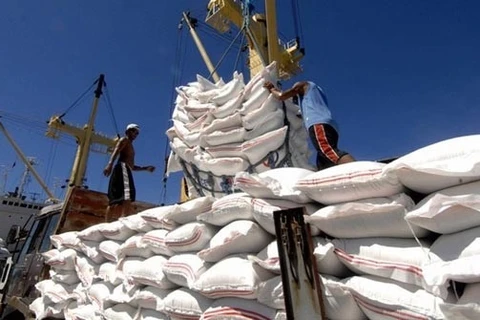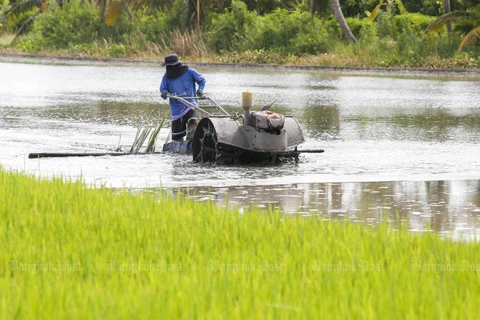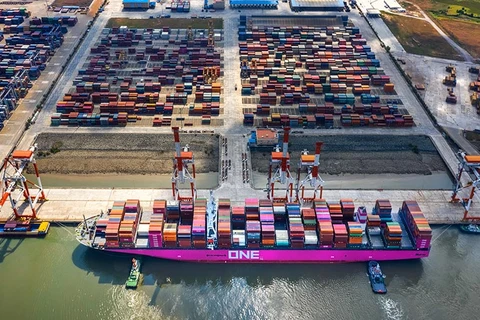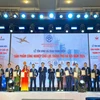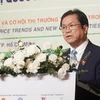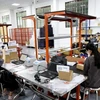Hanoi (VNA) – Vietnam may surpass Thailand in rice export this year thanks to its competitive price and the removal of rice export quota, experts have said.
Statistics of the Thai Rice Exporters Association show that Thailand exported 2.57 million tonnes of rice worth 54.2 billion THB (1.71 billion USD) in the first five months of this year, down 31.9 percent on volume and 13.2 percent in value year-on-year.
Meanwhile, Vietnam shipped nearly 2.9 million tonnes of rice for 1.41 billion USD in the reviewed period, up 5.1 percent in volume and 18.9 percent in value, according to the Vietnam Chamber of Commerce and Industry (VCCI).
The Thai association said the country’s rice export volume this year is expected to stand at only 6.5 million tonnes, the lowest in the decade and falling behind the target of 7.5 million tonnes.
The contraction is due to decreasing global demand under the impact of the COVID-19 pandemic, a strong baht – Thailand’s currency, and lower output due to the prolonged drought.
Thailand currently ranks third in rice export, after India and Vietnam. Its major rice buyers include the US, South Africa, Angola, China and Japan.
Experts forecast that Thailand is likely to fall from the third to the fifth place in the list of global rice exporters in the next decade unless the country adopts long-term policies to increase the competitiveness of the staple.
Vietnam has succeeded in selling rice at cheaper prices than Thailand, and it has recently won contracts to export the commodity to key markets like China, Hong Kong, the Philippines, and Malaysia, the VCCI said.
In addition, the EU-Vietnam Free Trade Agreement is expected to help Vietnam diversify its rice markets.
Notably, apart from allocating a quota of 20,000 tonnes of rice to all members of the World Trade Organisation (WTO) this year, the Republic of Korea had given a quota of 55,112 tonnes of rice for Vietnam.
Those advantageous factors helped Vietnam surpass Thailand to secure its second place just behind India. The country is expected to sell 6.7 million tonnes of rice abroad this year, the VCCI said./.
VNA

